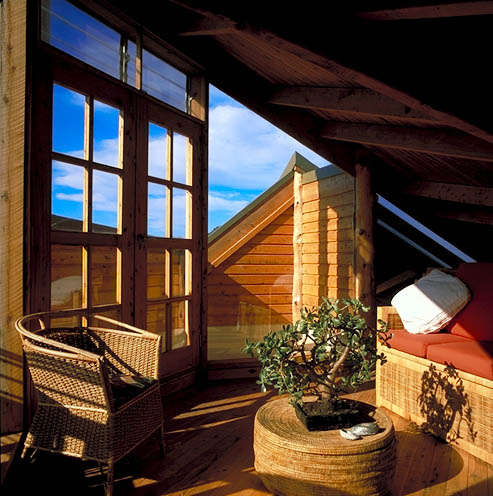Species Spotlight: Cypress
posted: 01/Feb/2016

There are around 2.5M ha of cypress dominated forests in Australia, including cypress in forests mixed with Eucalypts. The vast majority of cypress is harvested from State-owned land in Queensland and New South Wales. It's a medium sized tree, frequently reaching 25 meters in height and 450 mm in diameter

Cypress is a native softwood with relatively high density and hardness. It is naturally termite resistant - perfect for those looking to keep their homes chemical free. It has a aromatic odour and a knotty appearance with a distinct variation in colour from the brown heartwood and knots to golden yellow sapwood
 Low shrinkage and excellent durability and termite resistance make Cypress ideal for:
Low shrinkage and excellent durability and termite resistance make Cypress ideal for:
- structural framing and trusses
- exposed feature trusses
- beams and posts in buildings and landscaping
- flooring and panelling
- indoor and outdoor furniture
- playground equipment
- parquet, cabinets and laminated bench tops.

GENERAL PROPERTIES:
Durability: Heartwood is highly durable (Class 1 above ground use and Class 2 in-ground use) against decay and insect attack – Ref. AS 5604.
Termite resistance: Cypress has natural resistance and is rated Termite Resistant under AS 3660.1 and the BCA.
Shrinkage: Very low. From green to 12% moisture content average tangential shrinkage is 2.6%. Radial shrinkage is 2.4% and after seasoning the average unit movement is 0.28 tangentially and 0.23 radially.
Density: Average air dry density (12% MC) is 675 kg/m3. Average unseasoned density 800 kg/m3.
Grain: The grain is generally straight except for deviations around knots.
Preservation: Cypress is difficult to treat and is not commercially available treated. In above ground external applications brush on water repellant preservatives should be applied followed by oil based undercoats or stains.
MECHANICAL PROPERTIES:
Stress Grades: For structural use, visually stress graded to AS – 2858 (Note: Cypress framing is usually only available unseasoned (green))
F5 - readily available
F7 – available
Joint Groups: J3 unseasoned JD3 seasoned
Strength Groups: S5 unseasoned SD6 seasoned
Hardness: Very hard. Janka hardness – 5.6 kN unseasoned 6.5 kN seasoned
OTHER PROPERTIES:
Working Properties: Machines well both along and across the grain but it is prone to chip out around knots. Has good overall working properties but is less suitable for turning due to the presence of knots.
Fixing: Use of blunt or shear point nails are recommended for nailing guns to minimize splitting.
Gluing: Glues satisfactorily.
Finishing: Readily accept paints and other finishes – Knot sealers should be applied for light coloured painted finishes.
Fire Properties:
Early fire hazard properties
Ignitability index13
Spread of flame index 8
Smoke developed index 3
Critical Radiant Flux (CRF) and Extinction Area
Equal to or greater than 4.5 kW/m2 and Average Extinction Area less than 250 m2/kg
Material Group
Material Group Number 3
Previous Articles
New WoodSolutions Guides show commercial and multi-residential building costs are cheaper with wood!
Imagine if glues and nails became a thing of the past and we all start to weld wood!
Queensland Spotted Gum is a favourite of design professionals.